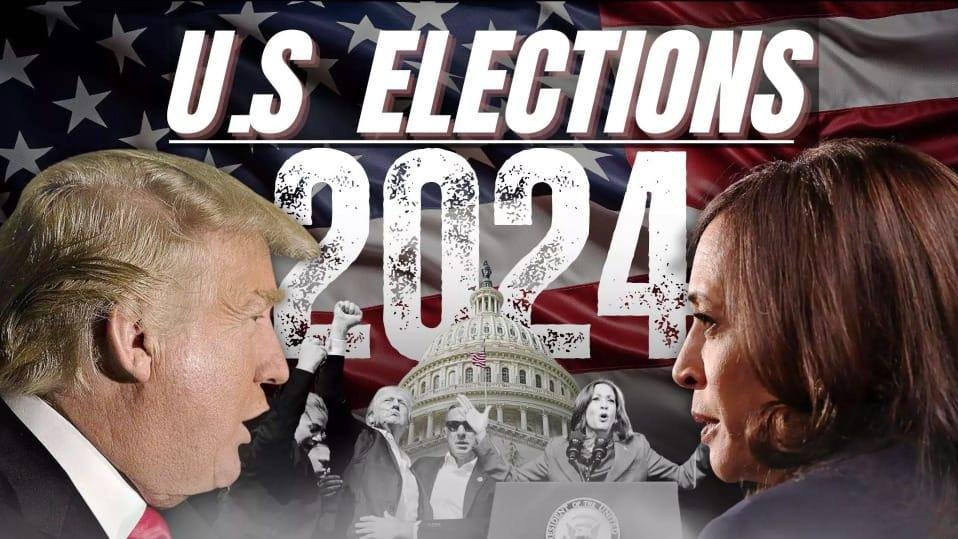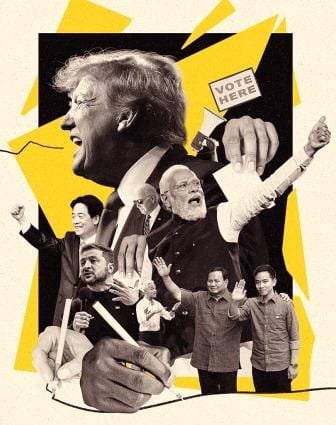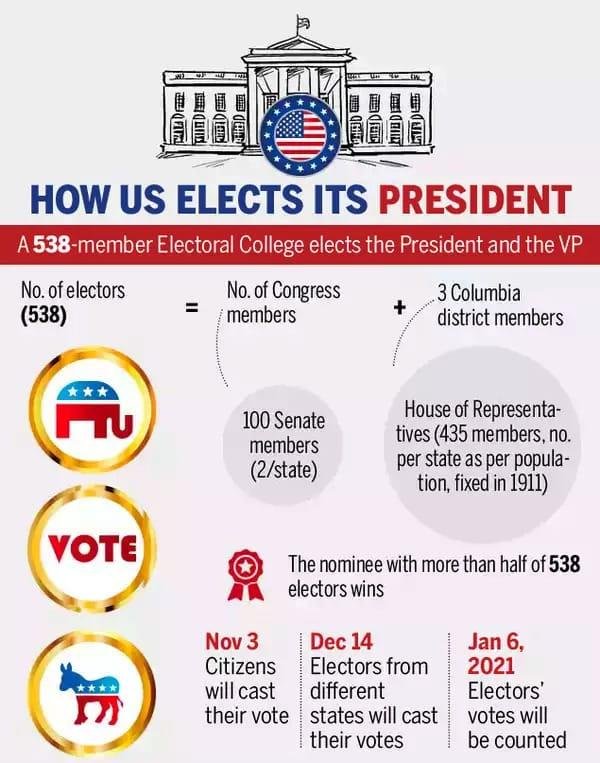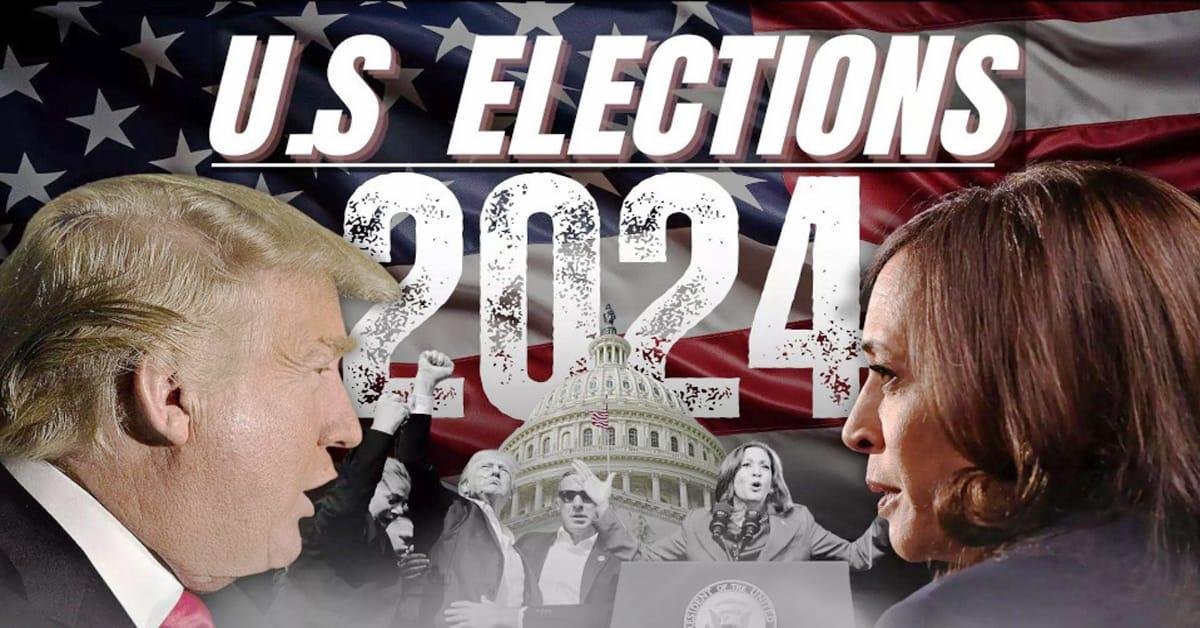How does the US President decide? How is the process different from the election process of other countries? Let us understand it by doing a step-by-step breakdown. The first step is the intention to declare. In the US election system, many candidates within a party file their nomination to become the party’s official presidential candidate. There are some criteria for filing a nomination. The person’s place of birth should be the US, the minimum age should be 35 years and the person should have been the President of the US for the last 14 years. The second step is TV debates. In other countries, the decision of who will be the candidate of a political party is taken by the election committee of the parties. Still, in the US election system, the public is a part of this decision-making process.

The members of a party who want to become a presidential candidate participate in TV debates. In this, the country’s issues are discussed and the public gets to know through these TV devices what is the stand of which candidate within the party on which issue. For example, Vivek Oberoi was the first to be … Ramaswami Mickey Haley and Mike Prince debated against each other despite being in the same party. The third step is primary and caucus. This step makes the American election different from the Asian election. In the presidential election in America, the public also chooses who will be the official presidential candidate of the political party they are supporting. Through the debates held in the previous phase, the supporters of a party have come to know what the views of each candidate are regarding the issues of the country in the party. Primary and caucus are two ways through which people choose their favorite candidate in a party. In the primary, voting is done through secret ballots. It is not known for which candidate this person is voting. However, caucuses are less controlled events. People gather in community halls, sports arenas, and cafeterias. Here people show their support for a candidate by raising their hands instead of voting in secret ballots. The process of caucuses consumes more time, so primaries are more popular than caucuses. Let us understand primary and caucus through an example. Joe Biden from the Democratic Party for the 2024 US election. Jason Pharma And Dean Phillips had filed nominations to become the official presidential candidate of the party. Out of these, primary and ballots were conducted to choose the official candidate of the party. In this, Joe Biden got the most votes, so he became the official candidate of the party. However, due to other reasons, he later withdrew from the presidential race. The announcement of who is the party’s official candidate is made in an event called the National Convention. The fourth step is the Presidential veto. After the National Convention, it is decided which candidate is from which party in the presidential race. American news channels call the candidates for TV debates. Which candidate is how confident, who has what opinion on the issues of the country, all this is known from these debates.

The importance of these debates can now be understood from the debate between Donald Trump and Joe Biden and finally, he had to withdraw his nomination and in his place, Kamala Harris became the candidate from the Democracy. The fifth and last step is the National Presidential Election. In America, people directly vote for the President by a fixed number of people called electors. There are electors in every state. Just like in India, people do not directly elect the Prime Minister but the Member of Parliament and later these MPs elect the Prime Minister. Similarly, in America, the winning electors are known as the President. The total number of these electors is 538 and to become the President, one needs the votes of at least 270 electors out of these total elected, and finally, after going through this long process, America gets its President.
The United States election process vs other country process

The election process in the United States has unique elements that set it apart from election systems in many other countries. Here’s a look at how it compares in terms of government structure, voting methods, and election procedures.
1. Government Type and Structure
- United States: The U.S. is a federal republic with a presidential system, meaning the president is both head of state and head of government. It follows a two-party system dominated by the Democratic and Republican parties.
- Other Countries: Many countries are either parliamentary democracies (like the UK, Canada, and Japan) or constitutional monarchies. These often have multi-party systems that lead to coalition governments, especially in European and Latin American countries.
2. Election Frequency and Term Limits
- United States: Presidential elections occur every four years, with presidents limited to two terms. Congressional elections (for the House of Representatives) happen every two years, with senators serving six-year terms.
- Other Countries: Election frequency varies; many countries have four to six-year terms for heads of state. Some countries, like Germany, have no term limits for leaders, while others, like Mexico, limit their presidents to a single six-year term.
3. Primary System
- United States: The U.S. has a complex primary system that includes caucuses and primaries in each state, allowing parties to select their candidates. This process can last almost a year before the general election.
- Other Countries: Primaries are rare in other countries. Most political parties select candidates internally without holding extensive public primaries. For example, Canada and the UK rely on party conventions or leadership elections held within the party.
4. Electoral System
- United States: The U.S. uses the Electoral College system to elect the president. Each state has a set number of electoral votes, and the candidate who wins the majority of votes in a state typically wins all its electoral votes (except in Maine and Nebraska).
- Other Countries: Many countries use proportional representation (PR) in their elections, which distributes seats based on the percentage of votes each party receives. Others use a first-past-the-post system (like the UK for parliamentary seats). Some, like France, have a two-round system for presidential elections, requiring a runoff if no candidate gets a majority in the first round.
5. Voting Method and Accessibility
- United States: Voting is predominantly in-person, with some options for mail-in ballots and early voting. Voting on a weekday (Tuesday) can be a barrier to turnout, as it is not a holiday.
- Other Countries: Many countries hold elections on weekends or national holidays to maximize turnout. Countries like Estonia offer online voting, while others, like Australia, have compulsory voting and fines for non-participation.
6. Campaign Finance and Media Influence
- United States: Campaign spending is high, and candidates often rely on donations. Campaigns receive significant media coverage, with televised debates and extensive advertising.
- Other Countries: Many countries have stricter limits on campaign spending, with public funding in some cases. Regulations are often placed on media, and many countries limit political advertising and require balanced coverage.
7. Compulsory Voting
- United States: Voting is voluntary, with turnout ranging from 50-60% in presidential elections.
- Other Countries: Some countries, like Australia and Belgium, have compulsory voting, resulting in turnout rates of 90% or higher. Non-voters in these countries may face fines.
8. Runoff Elections
- United States: Runoff elections are generally not used in presidential races. Instead, the candidate with the majority of Electoral College votes wins. Some states use runoffs in primary elections or certain local elections.
- Other Countries: Runoffs are common in presidential systems worldwide, such as in France and Brazil, where a second round of voting occurs if no candidate secures a majority in the first round.
9. International Voting Rights
- United States: U.S. citizens abroad can vote via absentee ballots but must register in advance.
- Other Countries: Many countries allow expatriates to vote, and some, like Italy, even designate seats in parliament for overseas citizens.
10. Multi-Layered Election Process
- United States: The U.S. election process includes the popular vote, the Electoral College, and a lengthy primary season.
- Other Countries: In countries with parliamentary systems, elections are often direct. The majority party or coalition in the legislature typically appoints the head of government without an additional election.
Conclusion
The U.S. election process is characterized by its Electoral College, lengthy primary season, and voluntary voting system. By contrast, many other democracies streamline the process, often use proportional representation, and promote higher voter participation through weekend elections or compulsory voting. These differences reflect each country’s unique political culture, priorities, and approaches to democratic governance.

Story of Trump, the grandson of a German barber: Did not get mother’s love, cheated on his wife; How did a casino owner become president?
On 6 January 2020, a crowd of more than 2000 people forcibly entered the US Parliament. This scene, seen for the first time in American history, resulted from Donald Trump’s electoral defeat. Former President Donald Trump is once again the presidential candidate of the Republican Party. Donald Trump was born on 14 June 1946 in New York, America. His father’s name was Freedom and his mother’s name was Mary Anne Frederick. The American real estate developer, i.e., he used to work in building construction. According to the New York Times report, Donald Trump started earning $2 lakh annually from his father’s business when he was 3. By the time Trump was 8, he had become a millionaire.

During his school days, Trump started bullying his fellow students and his brother at home, so his father got him admitted to the New York Military School at the age of 13. Here Trump learned leadership. After passing out from the military school in 1964, Trump studied at Fordham University for 2 years, after which he transferred to the Warden School of Pennsylvania University. Trump got a degree in Economic Science in 1968 after getting an education in Real Estate. In the same year, he joined his father’s business at the age of 22. However, Trump got the business due to the decision of his elder brother and friend. Trump chose to become a pilot instead of joining his father’s business. Trump’s personal life was also not much discussed. In 1977, while proposing to a Czechoslovakian model, Deewana, he said that if you do not marry me, you will ruin your life. On 9 April 1977, both of them got married. Trump had told one of his friends that he wanted five children.

Trump started convincing Deewana for five children and gave 2.5 lakhs to Deewana for each child. Deewana and Trump had three children. In 1985, Trump met a model Marla Maples during a tennis match, and in December 1990, Trump and Deewana got divorced. After this, Trump married Marla, at that time Marla was already pregnant. Trump and Marla got divorced in 1997. The divorce process was going on. During this time, Trump He met Melanie Doss on 22 January 2005 and they got married. Melania and Drum also have a son. Trump joined the Republican Party in 1987 but officially entered US politics in 2015. Meanwhile, he changed parties five times. In the 2016 Presidential election, Trump faced Hillary Clinton of the Democratic Party. Trump became the President of America in 2017 after winning the election. Trump first attacked the conservatives by making aggressive statements. He openly said on issues like abortion that he would appoint judges who would overturn the decision on the right to abortion in America. Trump did this and that is the reason why crores of Republicans united in support of Trump.
Story of Kamala born to an Indian mother: Affair with a man 30 years older than her, opponents called her mistress; Will she create history by becoming the President
Bangla Lesson Crazy You can tell a lot of things about a lift US President Donald Trump said this for Vice President Kamala Harris Trump will face Kamal in the presidential election to be held on November 5 Kamala Harris, opponents once called mistress to humiliate Kamala Harris was born on 20 October 1964 in Oakland, California Her mother Shyamala Gopalan was Indian and father Donald Trump was from Jamaica Kamala is their first child In 1972 when Kamala was 7 years old, her parents had to leave America with her mother and sister and go to Canada when she was 12 years old Kamal’s friend tells that even in school her personality was very impressive

There is also an anecdote related to this Kamal’s friend told her that her stepfather sexually abused her After this Kamala called her to her house and produced her After completing school studies, Kamala returned to America and was admitted to Political Science at Harvard University Here the struggle for the rights of blacks gave her an understanding of politics After graduating from Harvard, Kamala completed her law studies from Columbia University in 1989. In 1990, she joined the State Bar Council of California and started working as an assistant.

In 1994, she met 60-year-old Billi Brown. Billi was the Speaker of the California Assembly. Despite the age difference of about 30 years, both of them dated each other for 2 years. Her relationship with Billi also affected her political career. Opponents even called her a mistress. Billi was accused of taking advantage of her position and she was taken to court. This happened in the year 2003 when Kamala was contesting the election for the District Attorney of San Francisco. However, despite these allegations, Kamala won the election. Within a year of becoming the District Attorney, Kamal also got into controversies regarding his approach. In 2004, a member of a criminal gang killed a policeman. People demanded that the murderer should be given the death penalty. Kamala did not demand the death penalty as a public prosecutor and opposed the District Attorney.

Kamala believed that the judicial system’s focus should be on preventing crime rather than punishing criminals. In 2010, Kamal became the first black woman to be elected as the Attorney General of California. Three years later, she met Douglas and Hough. Douglas was divorced and had two children. Kamala married him in 2014. Kamal does not have children of her own. Kamal entered electoral politics in 2016. This was the same year when Donald Trump became the President of America. Kamala Harris had the support of Barack Obama and Joe Biden. Kamala Harris became the second black woman to be elected to the Senate.
In 2019, she put her name forward to join the presidential race, although she later withdrew her name. After Biden’s victory in 2020, Kamala Harris became the first black woman Vice President in American history, after which her relationship with Delhi and the fact that she does not have any children of her own were raised on many occasions. In 2021, Republican presidential candidate Z-Evans, without naming Kamal, said that the country is being run by a childless cat lady who does not even have children of her own, whose personal life is not good, and whose personal life is spoiling the world. But many political countries have been burnt, Kamla is a presidential candidate in the US elections this time
